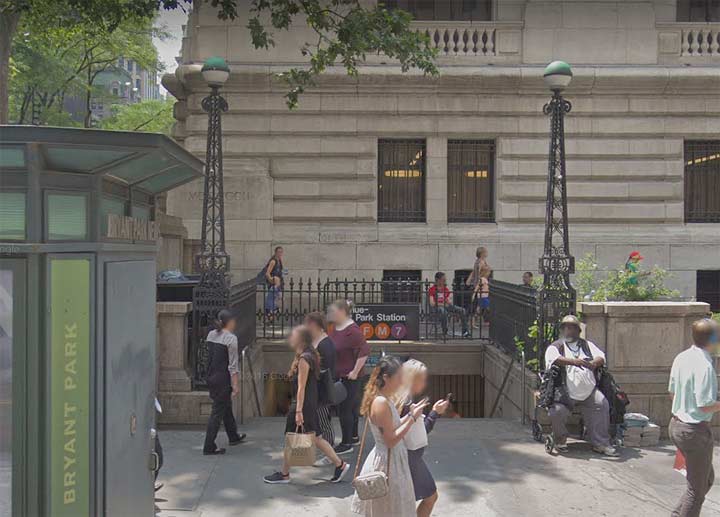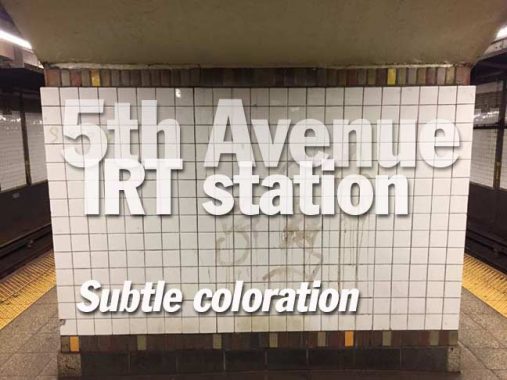There are only three subway stations located on 5th Avenue in Manhattan, and none at all in Brooklyn, which also has a lengthy 5th Avenue. In Manhattan, the Queen of Avenues has always been remarkably free of steam railroads, trolley lines, elevated trains above or subways beneath it, as it has always been a road for promenading and parading, especially each Easter Sunday, when chepaeaued throngs emanate from St. Patrick’s Cathedral.
Three crosstown lines do have stations on 5th Avenue: The Broadway BMT on its way to Queens, as N, R and W trains stop at the 5th avenue station serving Grand Army Plaza and the Plaza Hotel; the E/M trains on 53rd Street; and the Flushing IRT trains stop at the 5th avenue station at 42nd Street serving the New York Public Library and Bryant Park (actually the station was renamed 5th avenue/Bryant Park in recent years, even though the park fronts on 6th Avenue).
The IRT station opened in 1926, making it among the newer stations on the line. The original Flushing line traveled between Grand Central Terminal and Vernon-Jackson Avenues in 1915, and was greatly expanded both east and west, with extensions in 1917, 1925, 1926, 1927, 1928 and the latest, to Hudson Yards in 2015. The bulk of the line celebrated its centennial in April 2017.

I’ve always liked the IRT 5th Avenue station. It’s accessed through a pedestrian tunnel from the 6th Avenue IND concourse, decorated with Samm Kunce’s “Under Bryant Park” which replaced photos of the Receiving Reservoir, which occupied the Library’s space on the corner of 5th and 42nd from the 1840s through 1912. It’s also entered via this point on the corner. I like the two monumental lamp stanchions; I’ve only seen them at one other stop, the City Hall BMT on Broadway and Murray Street.
Once within, you go down a fairly steep incline (it’s easier to enter the station that exit it because of that) and you’re on a mezzanine. You can choose to descend to the #7 train platform, or continue to the end to the tunnel to the IND lines under 6th Avenue. On the mezzanine are the only tiled signs in the station that completely spell out the stop.

What impresses me about the #7 5th Avenue platform is the restraint taken with the mosaic tilework. Toward the end of the time that tile mosaics were used in stations, from about 1925 to 1928, subway architect/art director Squire Vickers decorated them with near riots of color, such as in the stations found along the L Canarsie Line or at Main Street on the #7.
Vickers did it a little differently here, sticking to the earth tones of previous BMT/IRT tiled stations, but limiting himself to browns, with brick red thrown in, and very occasionally, a bright gold tile, shown here on the mosaic bands behind a staircase.
The colored tiles are deployed quite sparingly, on the borders of the white tiles on staircases…
…and in a subtle tapestry effect, on the white tiles of the station walls.
Friezes using brown tiles surmount the “tapestries” with borders featuring red diamonds in gold fields. Rectangles with dark blue or black tiles, with lighter borders, intersperse the diamonds.
Absent any mosaic station identifier nameplates, the simple numeral 5 serves to identify the station. The 5 appears in a dark blue field with a border conforming to the overall color scheme of the station–browns, brick red, and a single gold tile.
Please help contribute to a new Forgotten NY website
Check out the ForgottenBook, take a look at the gift shop, and as always, “comment…as you see fit.”
10/26/18
